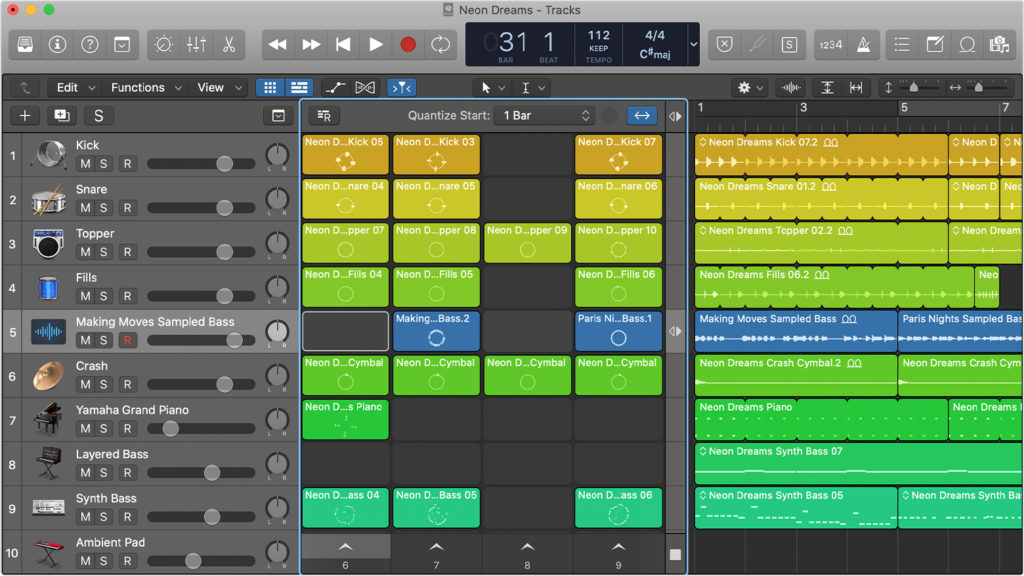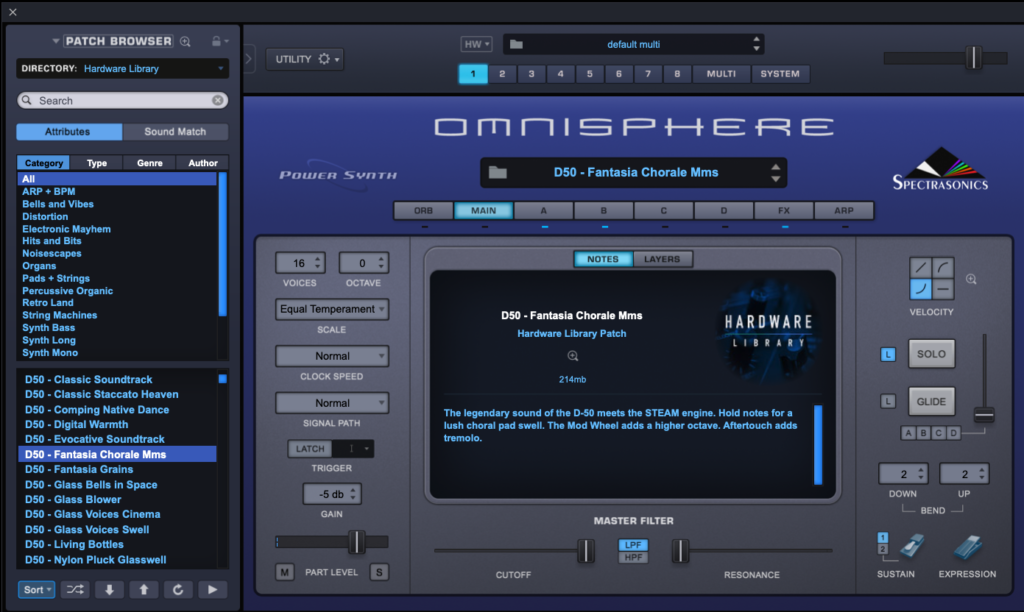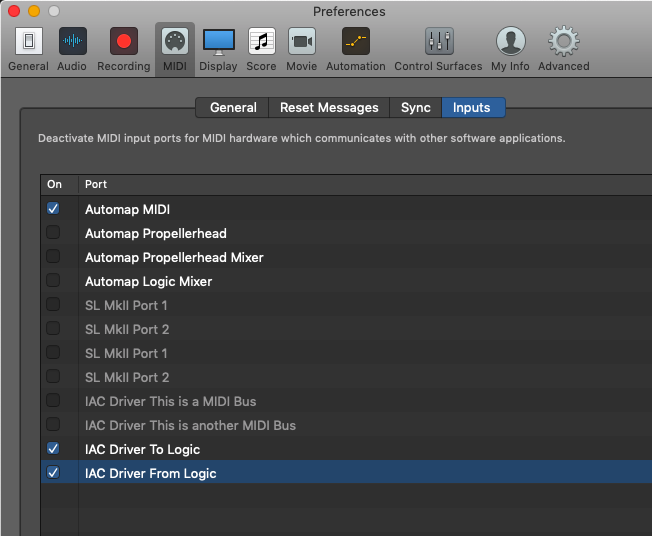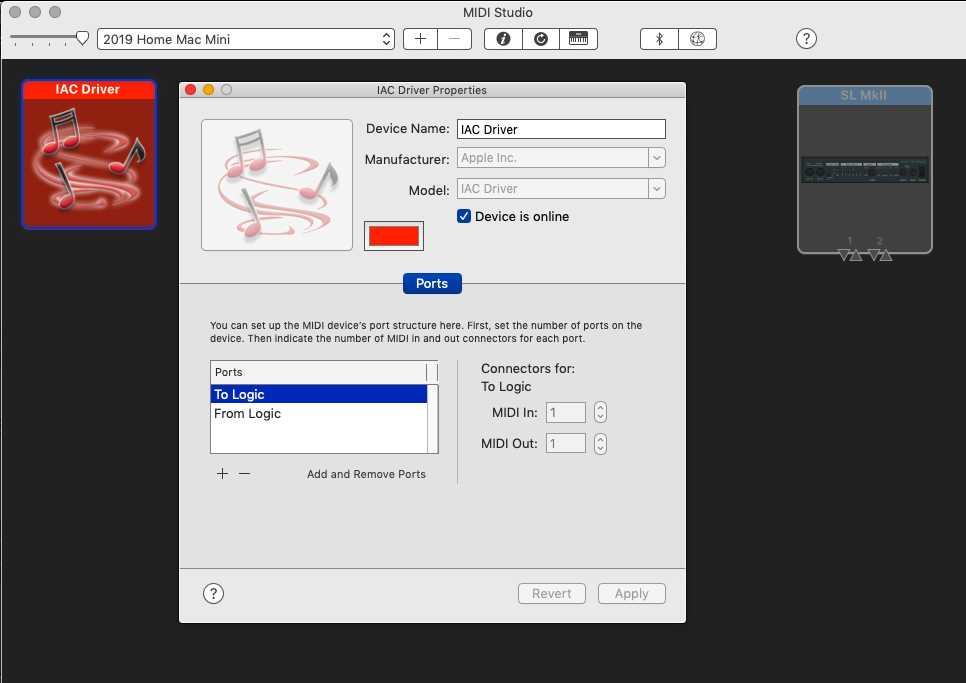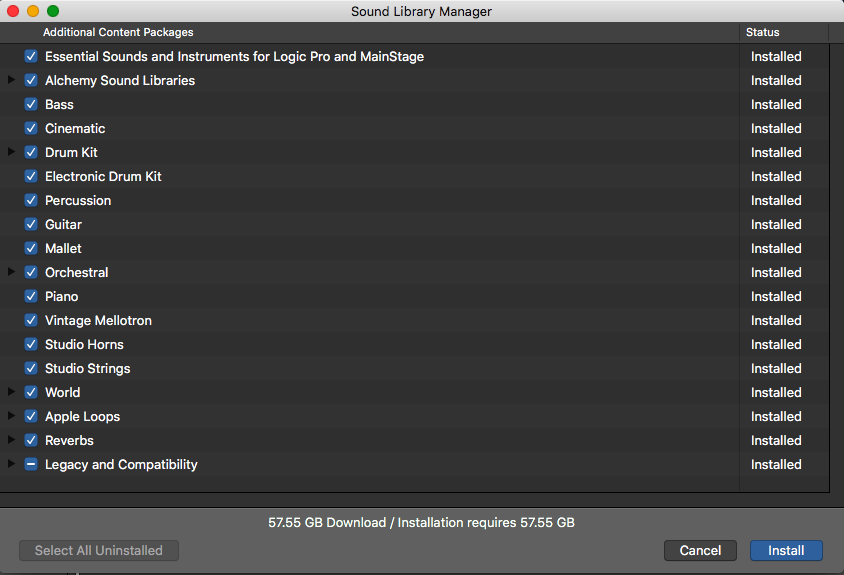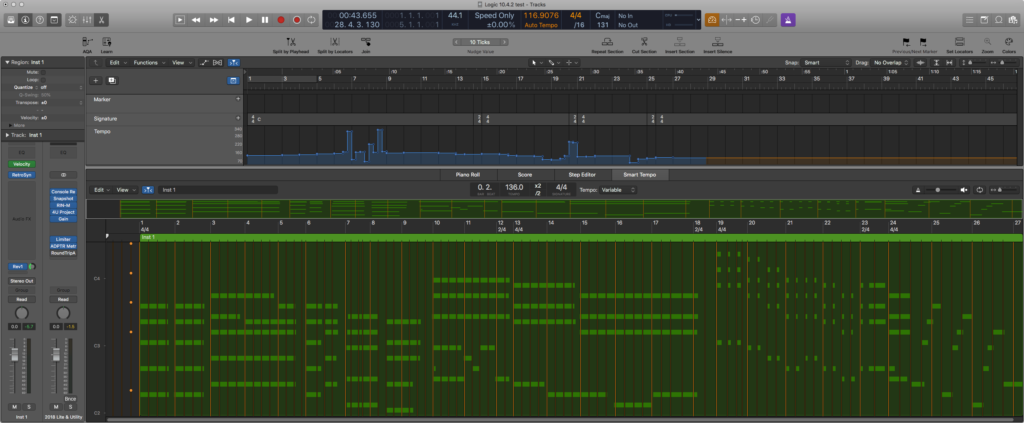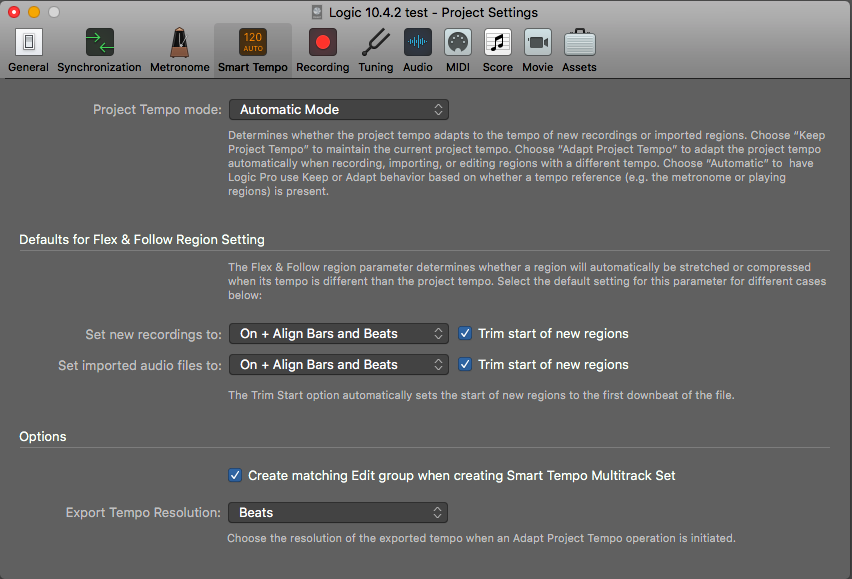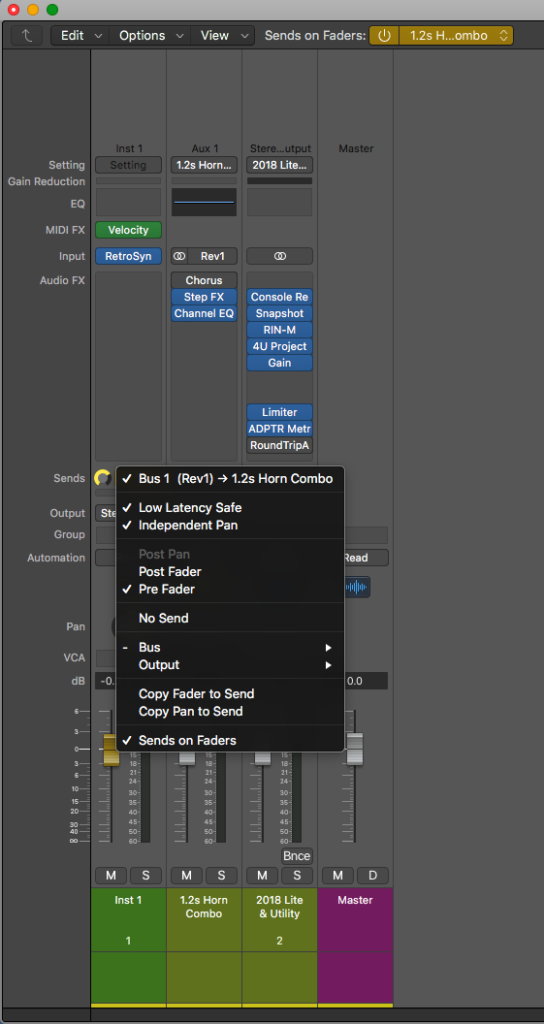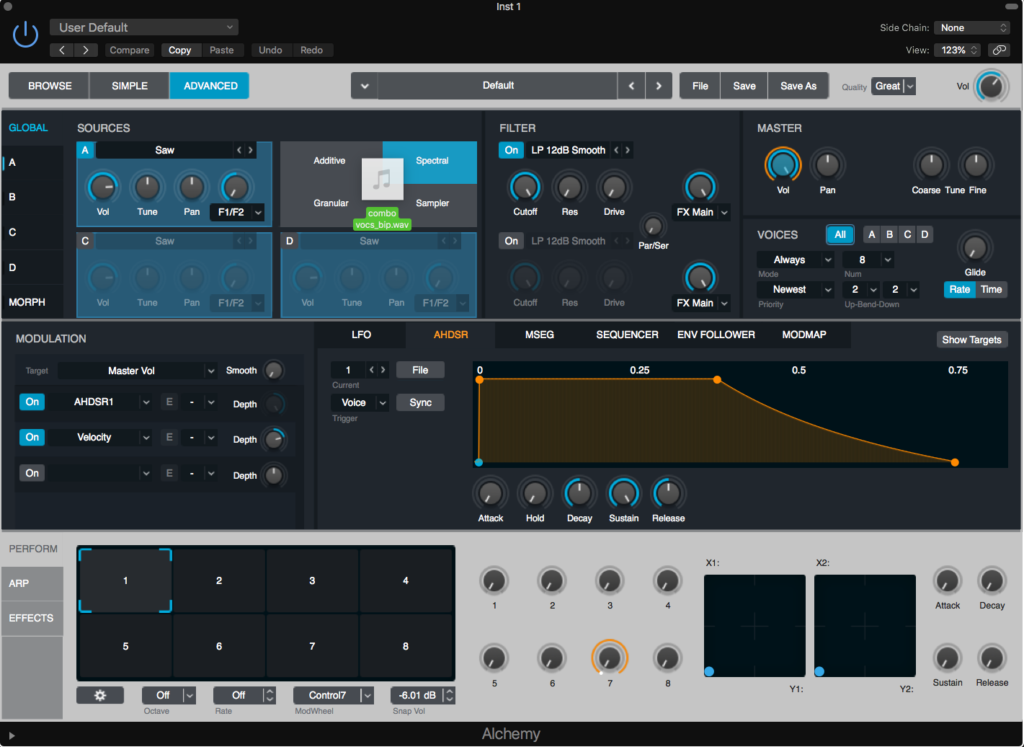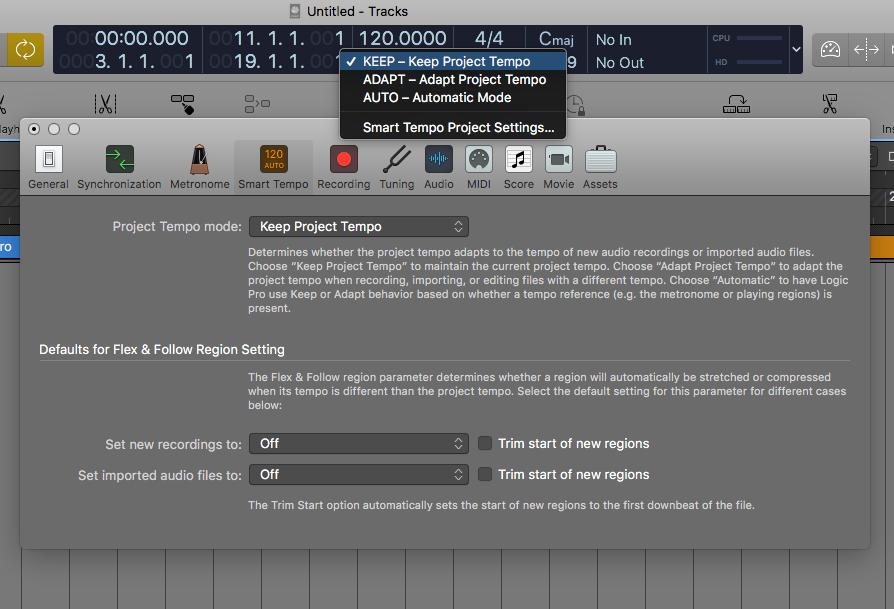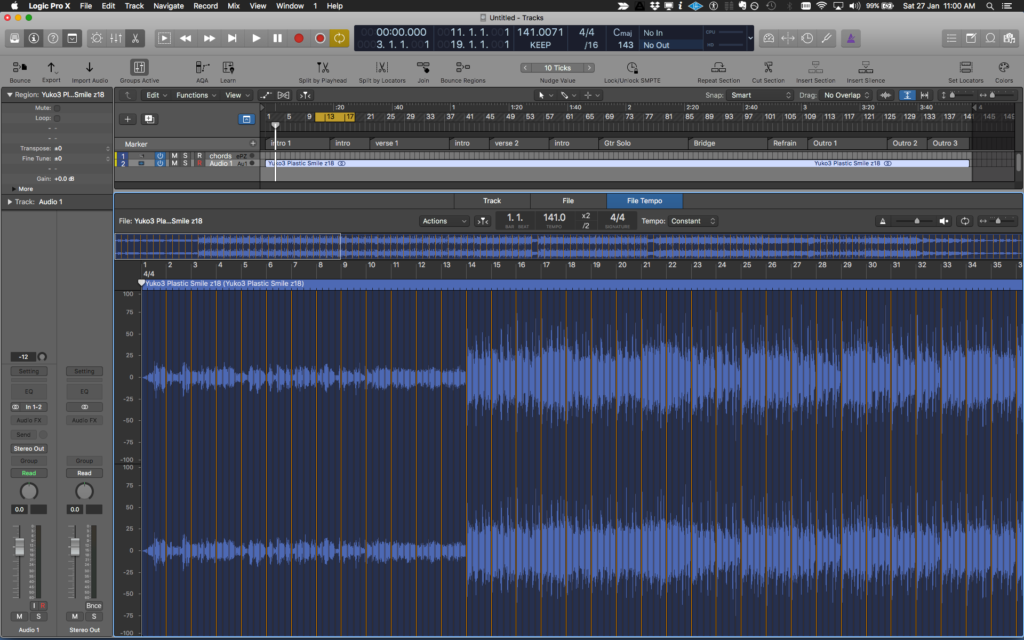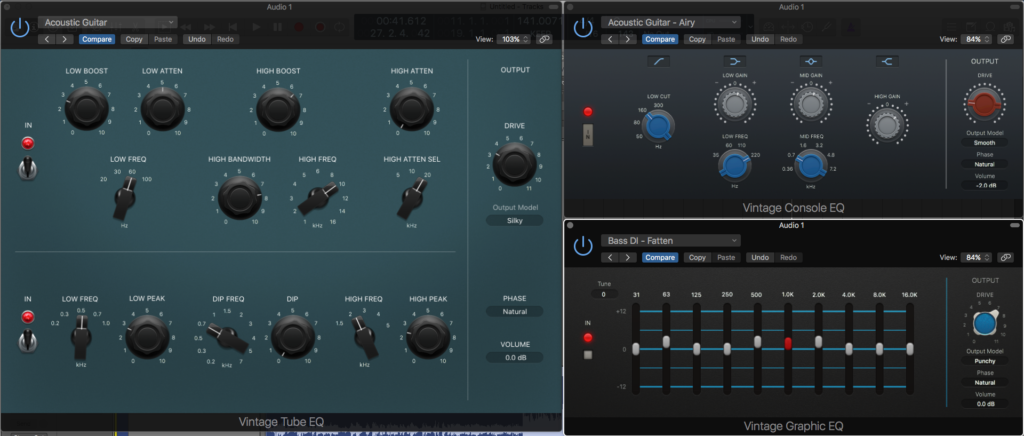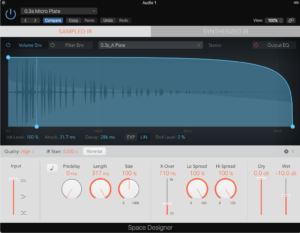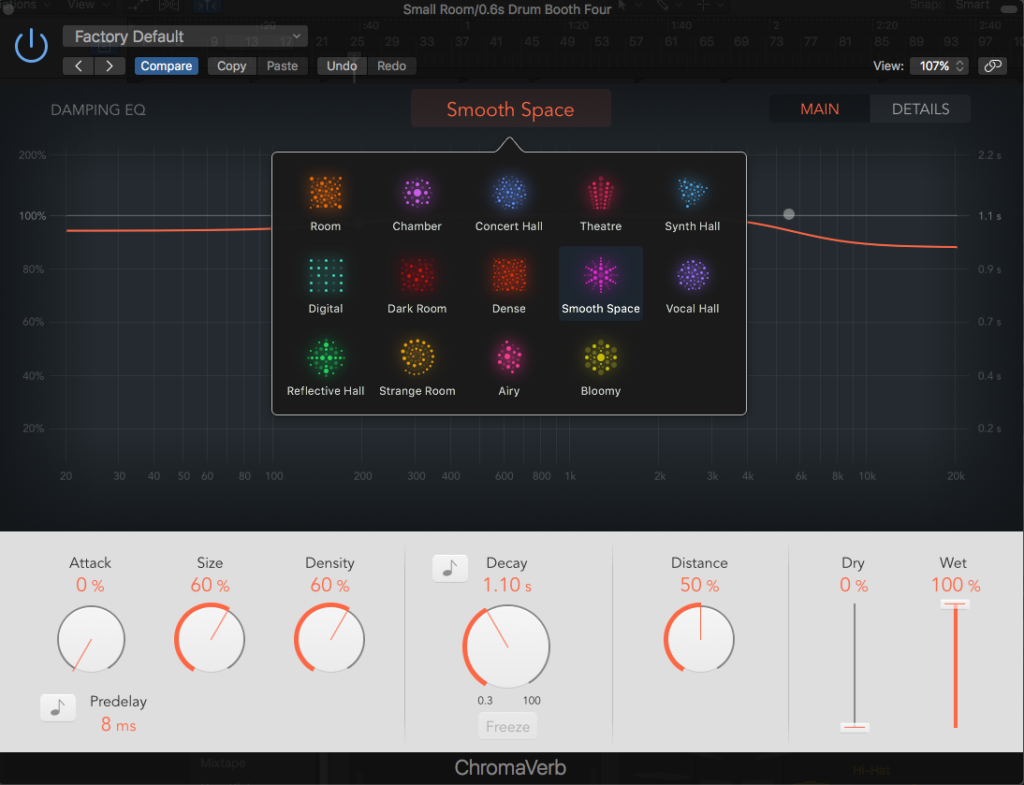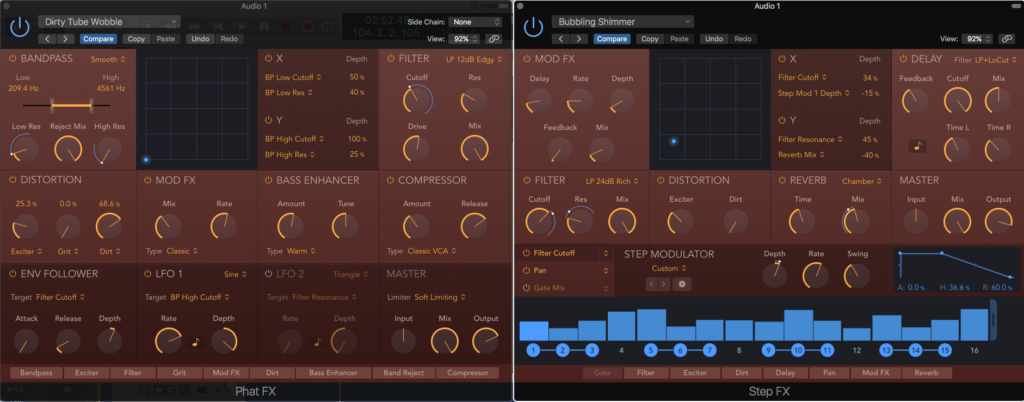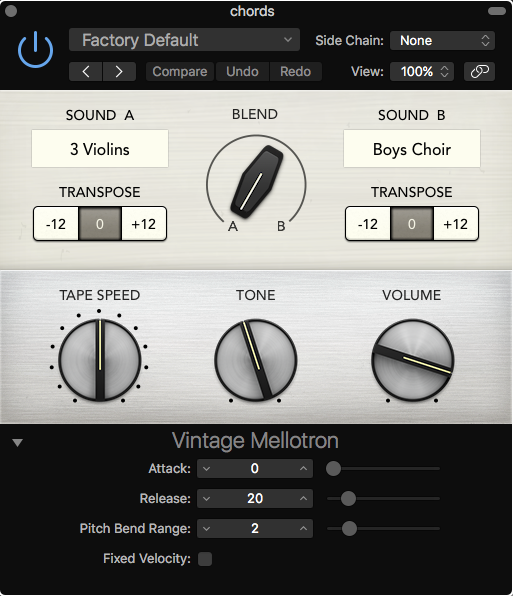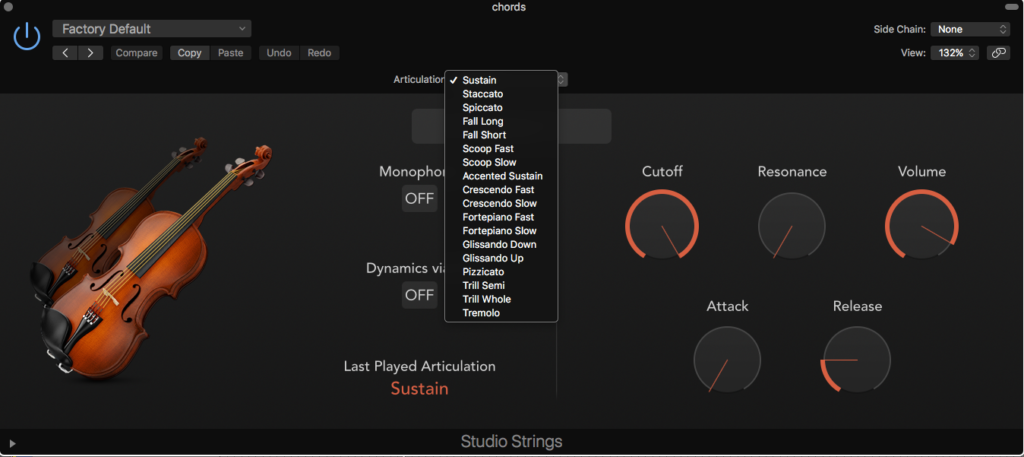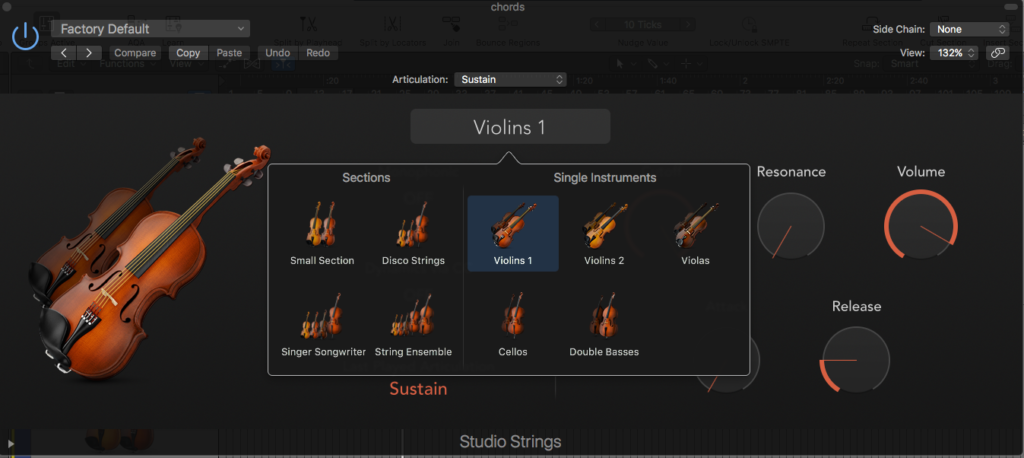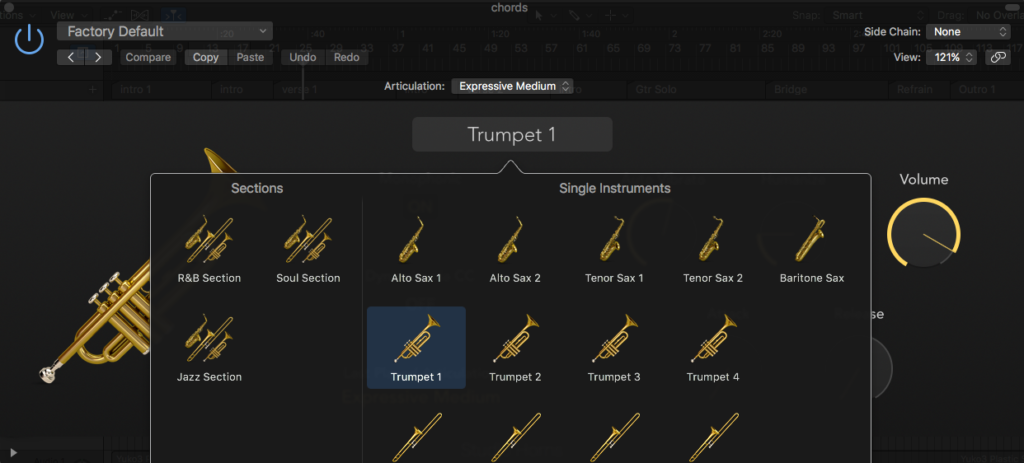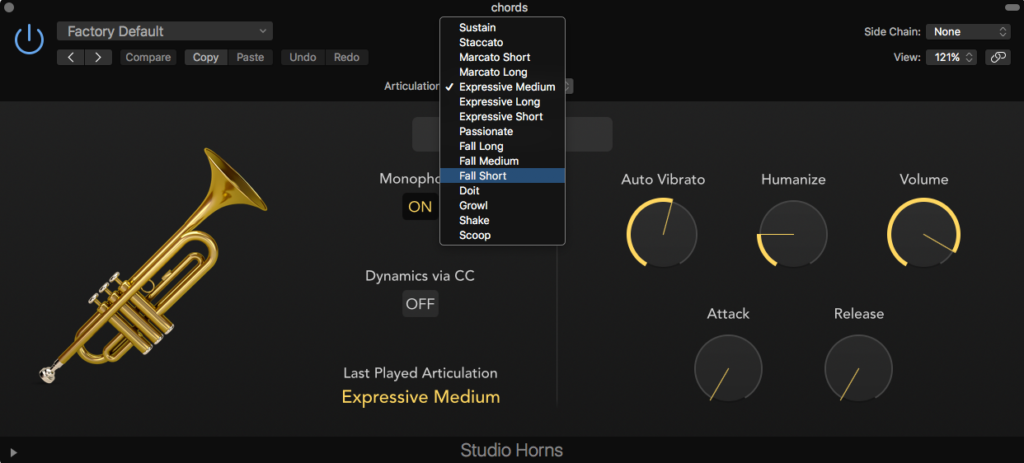As always with major version releases, there’s a bunch of new features, a bunch of enhanced features, and heaps of bug-fixes. Also in this release, there are improved optimisations for Apple Silicon on the fancy new Mac Book Pros that were just released. So, is it worth the upgrade – especially considering you need to have at least MacOS Big Sur to get it? Overall I think it is.
If you go to Apple’s official release notes here, it’s dominated by bug fixes, so here’s a slightly tidier version that highlights the interesting bits slightly more.
The first thing that hits you with this new release are the visual changes – some of it inherited from running within Big Sur (or Monterey), but there’s additional tweaks with look and feel and control bar icons and the like.
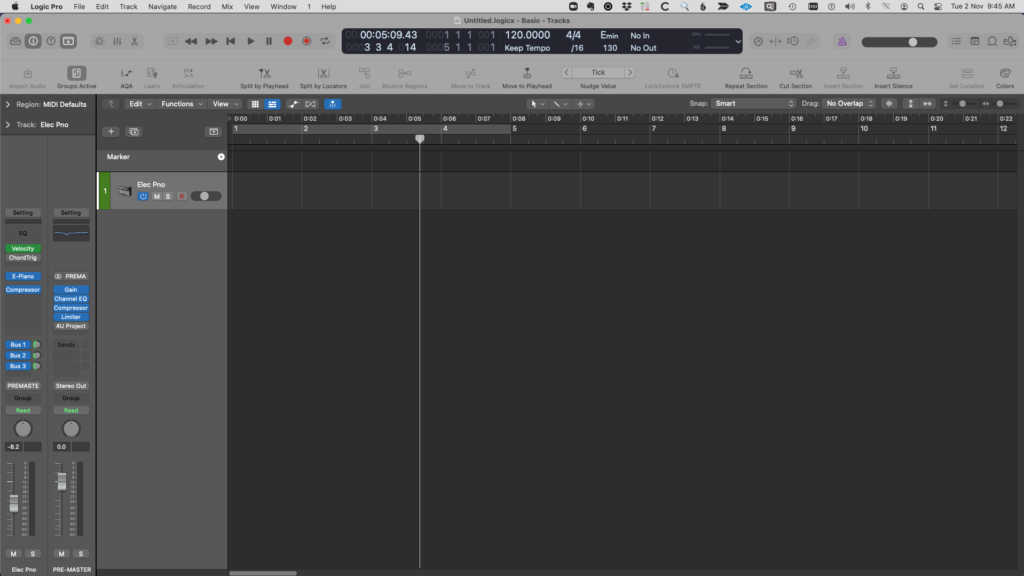
Other than that – here’s a list of the main feature updates, and also some other interesting bits teased out from the release notes. Plus a few things I’ve discovered myself.
Spacial Audio and Dolby Atmos workflow and export.
Also known as “immersive audio” or “immersive music”. This is pretty major.
Although Logic Pro has incorporated surround and binaural features since the early versions, this is much more up-to-date and enhanced, and is designed to help provide Dolby Atmos compatible music mixes to match Apple’s enhanced audio features in hardware (and on the Apple Music store).
In light of this, Logic Pro’s tracks can either be part of the surround “bed” or be one of up to 118 Dolby Atmos pan-able “objects”.
The beauty of Atmos is that the 3D mix space can be mapped to whatever the listener’s system has, plus you can have any movement automation of your objects mapped as well. It’s pretty cool and it also works really well with just headphones and earbuds, giving a sense of space and “3D” sound.
You can set your export and monitor settings to a range of outputs – anything from stereo, binaural for headphones, and various surround formats up to 7.1.4 (7 main/surround speakers, 1 sub/LFE, 4 height speakers). This is performed by the special Dolby Atmos encoder bundled into Logic Pro.
There’s also expanded pan controls on each channel strip to match this setup. 13 Logic plug-ins have been updated to deal with up to 7.1.4 channel formats. Export for Apple Music is via a special ADM BWF file.
You can now set the MIDI-In port and channel in the Track Inspector,
plus you can also select a separate output MIDI channel. This may not seem like much, but it is huge long-asked-for feature for those of us running multiple MIDI controllers, or for shared jamming into a single Logic project. You used to have to go and wrestle with Logic’s MIDI Environment to be able to do this, and it was not always the most reliable (it was actually pretty horrible) when it came to Logic placing the MIDI regions on to the correct tracks after a recording pass.
MIDI 2.0. This is a pretty huge update as it provides a lot of extra features under the hood, but you won’t see much of a difference until you start using controllers and instruments that are compatible with the MIDI 2.0 standard. It’s enabled or disabled in preferences and is backwards-compatible with MIDI v1.0. There’s not a lot of documentation yet about how it all really works and what you can do with it within Logic.
Additional content:
There’s some new spacial audio example/template projects.
2800+ new loops in a variety of genres and from some top producers – check out the Live Loop templates.
More than 230 new instrument and audio patches.
In the Patch Library – if you look up at the top, you can filter content to individual sound packs.
50 vintage and modern drum kits, including a collection of 808 samples.
Step Sequencer:
Step Sequencer has had a lot of love in this release. A LOT. Not only a heap of bug and glitch-fixes, but some powerful new features. If you haven’t tried it out yet, it’s actually pretty cool step-based editor for creating MIDI-based riffs and grooves. Also handy for ambient semi-random stuff as well.
There were a few issues that made using Step Sequencer a bit impractical for many MIDI uses, but they mainly seem to be fixed in this update. The two main ones are new Live Record mode for real-time capturing of note and automation events into rows – this is great! And there are now ways of managing quantise (using Start Offset) and velocity.
And it’s now possible to convert MIDI regions to Pattern regions – you could only go in the other direction before. This means you can use Step Sequencer to do some additional cool stuff to regular old MIDI regions.
Mono (one note only per column) and legato mode (adds an extra tick in length over 100% to force legato performances in synths and samplers).
Step record mode.
Sorting of rows.
Command + Option can now be used to tie steps together.
There’s a menu to delete unused rows.
Pattern Increment/Decrement controls can scale all rows in whatever the current edit mode is set to.
Option + Shift can now be used to ramp values between specified steps.
Related: Drum Machine Designer pattern tweaks:
Adjusting the Note/Octave values in a Drum Machine Designer patterns now changes the pitch of the sound rather than playing a different pad/sound.
Start Offset and Chance are now included by default in Pattern regions created for Drum Machine Designer.
It is now possible to split a Drum Machine Designer Pattern region into individual Pattern Regions for each kit piece. Tasty.
General enhancements:
The count-in now uses the time signature of the bar where recording will start in cases where there is a time signature change at that bar. Very handy for working with eg soundtracks where there are different signatures between sections.
It is now possible to paste regions copied from multiple tracks to new tracks using a Marquee selection to define the starting track and position.
The Select Unused Tracks command now excludes tracks inside Summing Stacks.
Oh and it looks like they may have fixed the Track Sorting which used to unpack all your Summing Track Stacks as well.
Automation – lots of bug fixes, and:
You can now record Automation while recording Audio regions (as well as MIDI regions as before).
It is easier to copy/paste automation plug-in data between tracks.
Enabling the bypass button for automation in the channel strip now dims the automation data instead of hiding it.
Automation is now reliably chased and displayed in the track header control when playback is started at any point in a project.
It is now possible to record automation with regions on the main track of a Track Stack.
Holding Option while selecting or deselecting “Record Automation with MIDI Regions” now sets all compatible channels to the setting.
Chase – various bug fixes and improved reliability, including;
Regions with Clip Length enabled no longer cause unexpected notes to be chased at the start of playback.
Note events at the start of a region are no longer chased if the left corner of the region starts after the note on.
Track Stacks – various bug fixes and minor improvements.
Flex Time/Flex Pitch – lots of bug-fixes, including;
Fixes an issue where the Reset All Flex Edits command on a set of Grouped tracks in Slicing mode could throw the regions out of sync with one another.
Fixes an issue where audio regions set to Flex: Mono mode could sometimes exhibit crackling noises after the region borders are adjusted.
Alchemy – a few bug-fixes.
Library:
You can now filter to individual Sound Packs and Producer Packs.
The Patch Merging filter remembers its previous settings when you hide it then open it again (Finally – I’ve been waiting years!)
Plug-ins – lots of bug fixes and some minor enhancements;
The disclosure triangle for advanced plug-in parameters is now available when the Advanced Tools preference is not enabled.
Pedalboard now has a mono->stereo mode.
Fixes an issue where Audio Unit V3 MIDI plug-ins could show up multiple times in the plug-in list.
Resolves an issue where IRs in Space Designer could be unexpectedly truncated after the project sample rate is changed.
Mixer – various bug-fixes and;
Plug-in insert slots now show a little arrow indicator when plug-ins are using a side-chain input.
Groups – various bug-fixes and;
Group settings now offer an option to create a default set.
Drummer/Drum Machine Designer – various bug fixes and;
Saving a patch based on a new instance of Drum Machine Designer on a track with a custom track name now uses the track name by default.
Drum Machine Designer sub-tracks can now be sorted.
Takes and comping – various bug fixes and;
It is now possible to split multiple selected takes in a disclosed Take folder at the same time.
Splitting or copying Take regions that have been renamed now appends a number to the name of the new segment.
Transpose settings in the MIDI region defaults are now applied to recorded Takes.
Region solo now works for selected Quick Swipe comps in Take folders.
Take Folders recorded over a tempo change are now the correct lengths.
Track Alternatives – various bug fixes and;Recording MIDI to a track showing inactive track alternatives no longer creates aliases on the inactive alternatives.Dragging an inactive track alternative to the area below the last track in the Tracks Area now creates a new track at the expected location and places the region there.
Fades
When a crossfade is edited, the right side of the fade now visibly updates as expected.
Smart Tempo – various bug fixes and;
Logic now displays a warning to switch the Smart Tempo mode to KEEP when starting a MIDI recording with a cycle enabled in AUTO mode in projects that have no tempo reference.
There are new key commands to navigate in the Smart Tempo Editor: Forward by Bar, Rewind by Bar, Forward by Beat, Rewind by Beat, Forward 8 Bars, Rewind 8 Bars.
Sound Library – various bug fixes and;
It is now possible to use an alias to refer to sound library content manually moved to a non-default location.
The Sound Library can now be relocated to volumes on Box.
Content – various bug fixes and;
The setting to enable Patch Merging in the Patch Library is now remembered when the library is closed and then reopened. (Finally!)
It is now possible to filter the Sound Library to show patches from specific sound packs.
Import – various bug fixes and;
When importing Music XML files, Logic now asks whether to import the tempo map or keep the current tempo.
Logic now supports importing the new Final Cut Pro fcpmld XML file format.
Drummer regions are no longer changed to MIDI regions when importing a Drummer track from another project.
Export and bounce – various bug fixes and;
A progress bar now displays when converting multiple audio files to a compressed format in the Project Audio window.
Track numbers are now appended correctly when “Export all tracks as audio files” is performed while one or more Take folders are open.
Add to Apple Loops Library and Export now generates a 24bit audio file.
Auto Sampler – various bug fixes
Key Commands – various bug fixes and;
The Key Command editor now displays Touch Bar icons for those key commands that offer them.
The Key Commands editor now resets any selections when it is closed and re-opened.
It is now possible to assign multiple Key Commands to the same MIDI message.
The “Select muted regions/cells/events” command now only selects muted items within selected regions, or within a marquee selected area.
Unpacking folders and Take Folders is now performed with the same key command.
There is now a key command for Custom Row Name in Step Sequencer.
Global Tracks – various bug fixes and;
Shift-clicking the lower left corner of a Global Track now resets its height, just as with other tracks.
Impulse Response Utility – various bug fixes
Selection-based Processing
Selection-based Processing now works on Take folders.
Smart Controls – various bug fixes
Score – various bug fixes and;
User-created Text Styles can now be deleted from a project.
Notes are now pasted to the correct position in the Score editor in projects that start on a beat sub-division.
Editing – various bug fixes and;
Track automation can now be copy/pasted in the Piano Roll using key commands.
The Event Float window now opens the first time a note is double-clicked in the Piano Roll.
MIDI CC data in the Piano Roll automation lane can now be quantized.
The Event List editor now properly updates to display newly loaded Articulation Sets.
Undo – various bug fixes and;
Undo now works for parameter changes in the Mapped Instrument editor.
Undo now works for routing changes applied to stomp boxes in the Pedalboard plug-in.
Changes to the Surround Panner now create Undo steps.
Changes to Mixer channels with Record Automation with Regions enabled now create undo steps.
Video – various bug fixes and;
If the frame rate of a movie is changed while importing, and the audio is not imported as a separate track, a blue frame indicating the video contains embedded audio is now displayed in the global track as expected.
Logic Remote – various bug fixes.
Control Surface and MIDI controller support – various bug fixes and;
The Control Surface preference window now includes a column to display the Lua script version number.
Control surface buttons now reliably reflect the states of key commands assigned to them.
LUA scripts can now connect to virtual MIDI ports.
MIDI device scripts that contain an image of the device no longer show a generic image for the device in Logic.
General – various bug fixes and;
In Logic pro preferences, rather than all the separate groups of advanced preferences, there’s now a single advanced features tick-box: “Enable Complete Features”.
Better Flex analysis.
Step Input now preserves the MIDI channel sent by an external MIDI device.
The main menu now remains fully functional when the Template Picker window is open.
Engaging Track Protect on an armed audio track will now disarm it.
The “Separate by MIDI Channel” command now uses existing sub-channels of a Multi Instrument.
Sustain pedal events performed during playback now override recorded sustain pedal events.
The playhead now displays at the correct position when switching from Skip Cycle to Cycle mode while playing.
MIDI Modify in Step Input now works with the Musical Typing keyboard.
Quick Help settings can now be accessed directly from the Quick Help button in the Control Bar.
The Clean Up Project command now removes unneeded DUP files resulting from creating audio file backups.
Tracks with MIDI FX plug-ins are no longer silent if frozen in Source Only mode.
Engaging record with a single-tick length Marquee zone no longer engages Auto Drop. (Finally!)
MIDI events in track regions are now displayed more consistently at all vertical track zoom levels.
Hyperlinks added in Notes fields now open a web browser as expected.
There is a new preference setting to adjust Logic’s light/dark appearance independently of the system setting.
Settings in the File Browser are now retained after the Browser is closed and reopened.

